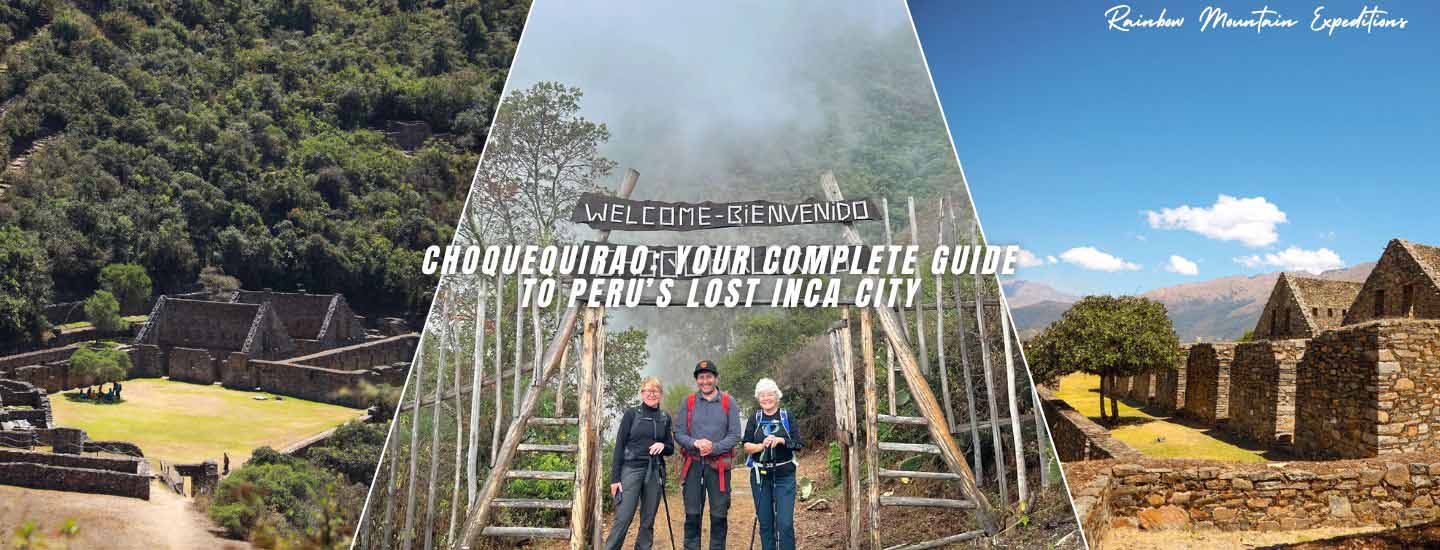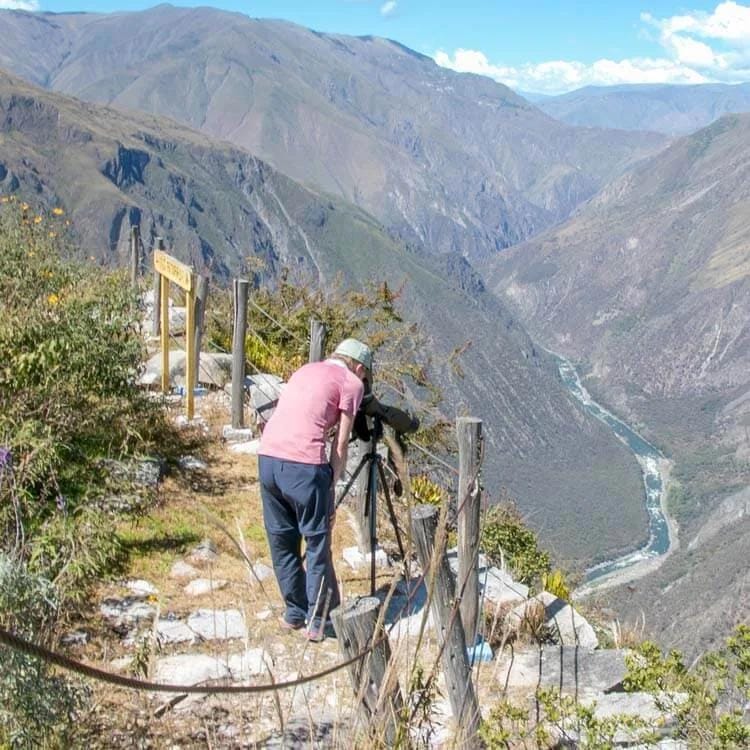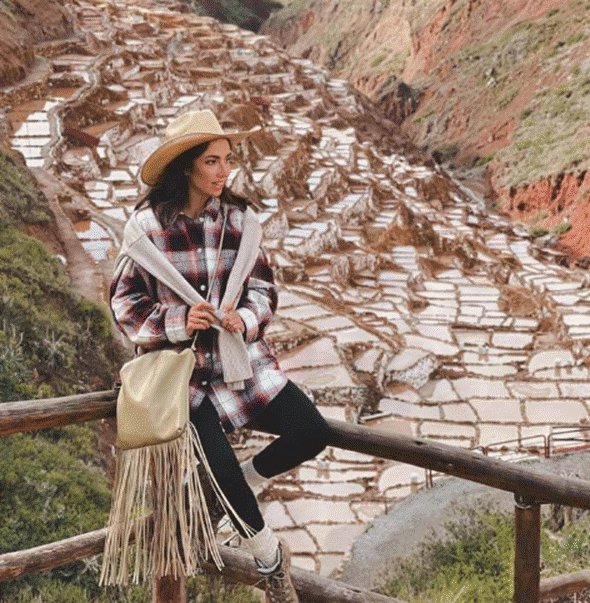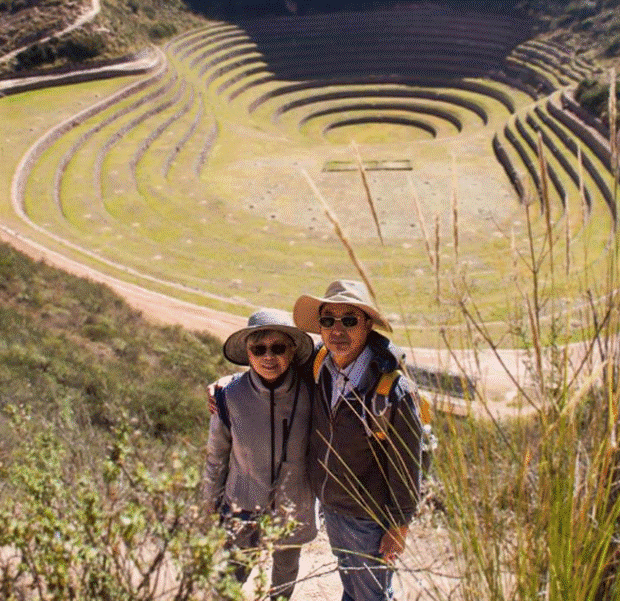Choquequirao: Your Complete Guide to Peru’s Lost Inca City
Are you ready to step off the beaten path and dive into the mysteries of one of Peru’s most remarkable and least-visited Inca sites? The Choquequirao trek takes you deep into the Andes, where breathtaking scenery, ancient ruins, and rich Inca history await. Often called the “sister city” of Machu Picchu, Choquequirao offers a quieter, more immersive adventure without the crowds—ideal for history lovers and thrill-seekers alike.
In this complete trekking guide, you’ll find everything you need to prepare for your hike to Choquequirao—from tips on navigating rugged terrain and handling high-altitude conditions to what essentials to pack and what to expect along the journey. Whether you’re a seasoned trekker or a first-time explorer, this guide will help you make the most of your adventure to Peru’s hidden Inca treasure.
Choquequirao: A Spiritual Powerhouse
Hidden deep in the Andean mountains, Choquequirao is far more than a forgotten Inca city—it’s a sacred sanctuary where the Incas connected with the divine. Gold, considered the earthly reflection of the Sun God Inti, played a vital role in their spiritual and ceremonial life. For the Incas, gold wasn’t just a symbol of wealth—it embodied light, life, and the power of their most revered deity.
The Sacred Bond Between Gold and Inti
To the Inca civilization, Choquequirao was not just politically significant—it was spiritually profound. The very name “Cradle of Gold” reflects the sacred connection between the site and Inti, the Sun God. This golden symbolism represented vitality, strength, and divine energy. For the Incas, Choquequirao was a place where earth and sky converged, where worship and wisdom coexisted—a true spiritual powerhouse in the Andes.
A Glimpse into the Inca’s Sacred Heart
Even today, Choquequirao radiates that ancient energy. With its dramatic landscapes and mysterious ruins, the site offers travelers a rare opportunity to experience the spiritual essence of the Inca worldview. It remains a powerful testament to their devotion to the sun, the cosmos, and the sacred forces of nature.
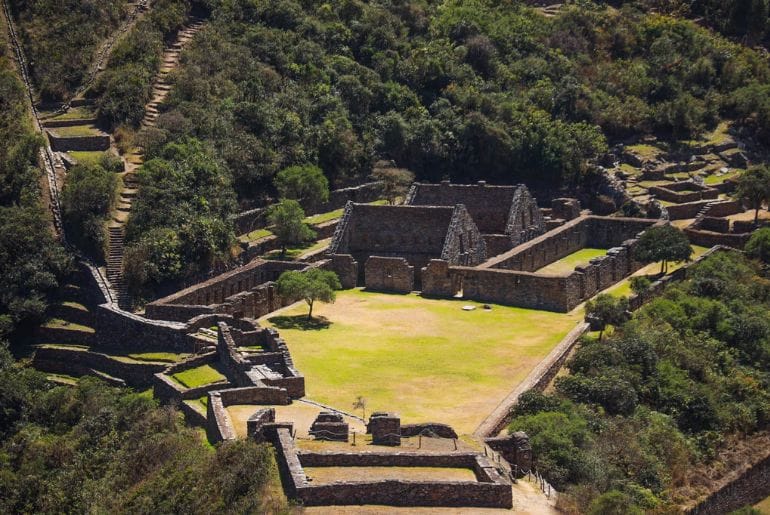
Pre-Inca Period at Choquequirao – Uncovering Ancient Origins
Early Settlers: The Antis and Their Legacy
Long before the Inca rise to power, the region around Choquequirao was inhabited by pre-Inca groups such as the Antis, including the Manaríes and Pilcozones. These early cultures played a vital role in the initial occupation and development of the Vilcabamba Valley. As noted by historian Dr. Aragón (1943), their settlements included important areas like Rosaspata, Puqyura (Chuquipallpa), Pampaconas, Saqsarayoq, Haquiña, and Pasto Grande, forming the cultural foundation for what would later become Inca territory.
The Influence of the Killke Culture
Excavations have unearthed valuable remnants from the Killke culture, known to inhabit the region during the Late Intermediate Period (1000–1200 AD). Their distinct ceramics and settlement patterns have been found across key Andean valleys, including Cusco, Anta, Urubamba, and Vilcabamba. Notable sites such as Ancasmarca and Qoriwayrachina offer a window into the Killke legacy, revealing the cultural continuity that eventually paved the way for Inca expansion and architectural mastery.
Choquequirao’s Role in the Inca Empire’s Origins
The early archaeological findings around Choquequirao offer invaluable insight into the foundational stages of the Inca civilization. Far from being just a remote outpost, Choquequirao played a strategic and symbolic role in the empire’s rise, shedding light on the cultural, political, and spiritual dynamics that shaped one of the greatest civilizations in the Americas.
Why Explore Choquequirao’s Pre-Inca Roots?
Understanding Choquequirao’s pre-Inca context allows modern travelers and historians to appreciate its deeper significance. These formative elements shaped the spiritual and structural foundation that would later drive the swift rise of the Inca Empire. Delving into these origins reveals how ancestral beliefs, settlement patterns, and sacred geography all merged to shape the Inca worldview.
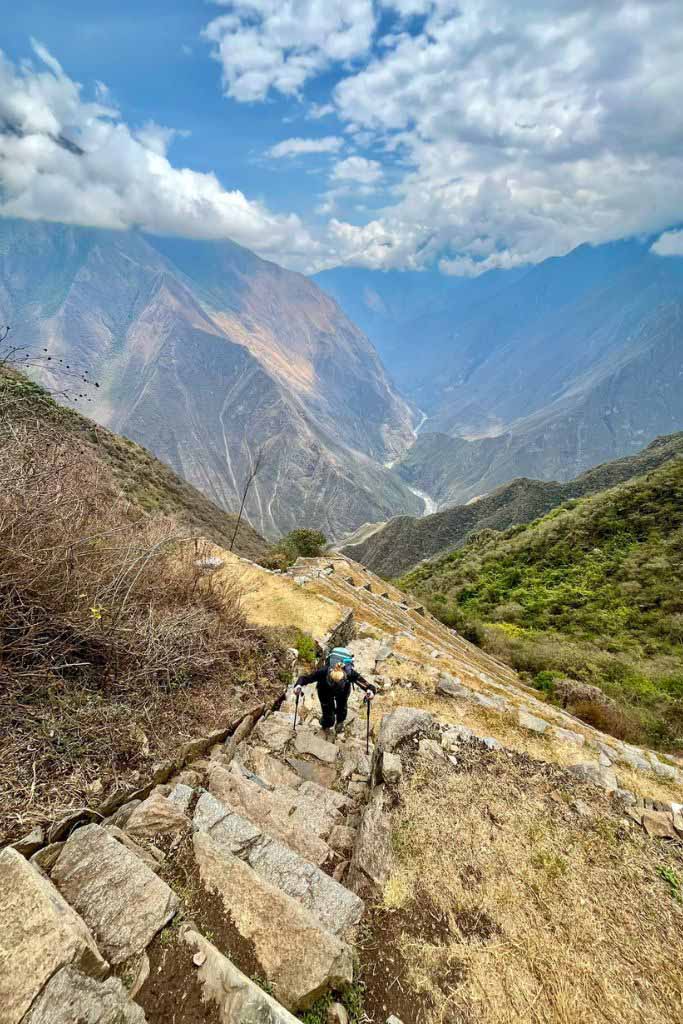
The Inca Period: Milestones in the Rise of an Empire
Inca Roca and the First Expansion Campaign
The first major military incursion into Chinchaysuyo—a vital northern territory—was spearheaded by Prince Inca Roca, heir of Cápac Yupanqui. This early campaign set a precedent for the settlement of mitmas—Inca colonies intentionally placed throughout key regions like the Apurímac River valley—strategically spreading imperial influence.
Viracocha’s Consolidation of Power
Following in Roca’s footsteps, Inca Viracocha, the eighth Sapa Inca, further consolidated power in the Andean highlands. His efforts fortified the empire’s regional presence, laying a solid foundation for the transformative leadership of his successor—Pachacutec.
Pachacutec and the Southern Andean War of 1438
The pivotal moment in the empire’s expansion came with the Great Southern Andean War of 1438. Pachacutec, the visionary emperor known for reshaping the Inca world, led this decisive campaign. His military success extended the empire’s frontiers and enabled the construction of monumental sites like Choquequirao, blending strategic importance with spiritual power.
Why It Matters: Pachacutec’s Vision and Choquequirao’s Legacy
Through his conquests, Pachacutec laid the groundwork for what became Tawantinsuyo, the Inca Empire at its height. Choquequirao emerged during this era not merely as a settlement, but as a spiritual bastion and ceremonial center—a mirror of Inca cosmology, strength, and divine connection.
What Was the Purpose of Choquequirao?
Far from being just another Inca stronghold, Choquequirao held a unique place in the empire’s spiritual and economic ecosystem.
A Sacred Power Center Hidden in the Andes
Perched between the Vilcanota and Vilcabamba rivers, Choquequirao occupied a strategic yet remote location—deep in the jungle but rich in resources. It is believed the Inca built it to support the extraction and production of coca leaves, precious minerals, rare feathers, natural dyes, and other luxury goods essential to the elite class and religious ceremonies.
A Site of Spiritual Devotion, Not Defense
Unlike typical Inca administrative centers or fortresses, Choquequirao wasn’t designed for defense or governance. Instead, it echoed sacred spaces like Saywite, functioning as a spiritual sanctuary where rituals to the apus—the sacred mountain spirits—were likely performed.
A Destination for Pilgrimage and Legacy
Everything about Choquequirao’s layout and surroundings points to a spiritual purpose. From its elevated terraces and ritual spaces to its awe-inspiring views, it was a place built to honor divine rulers and cosmic forces. Pilgrims and nobles may have traveled here not only for ceremony but also to reconnect with their cosmological roots.
- In many ways, Choquequirao wasn’t just a place—it was a gateway between the physical and the sacred, a symbol of Inca identity, power, and spiritual continuity.
Who Built Choquequirao?
Choquequirao’s construction is believed to have been carried out by mitmas—skilled workers whose efforts were vital to the Inca Empire’s expansion and upkeep. These mitmas were not local to the region—instead, they were relocated communities, and in the case of Choquequirao, many are believed to have come from the Chachapoyas culture, a powerful ethnic group from Peru’s northeastern cloud forests.
The Chachapoyas and Their Role in Building Choquequirao
Historical accounts suggest that the Chachapoyas were forcibly resettled by the Incas as part of their imperial strategy. After becoming part of the Inca domain—through negotiation or conquest—the Chachapoya were often dispatched to distant zones to support the empire’s expansion with their labor in construction and cultivation.
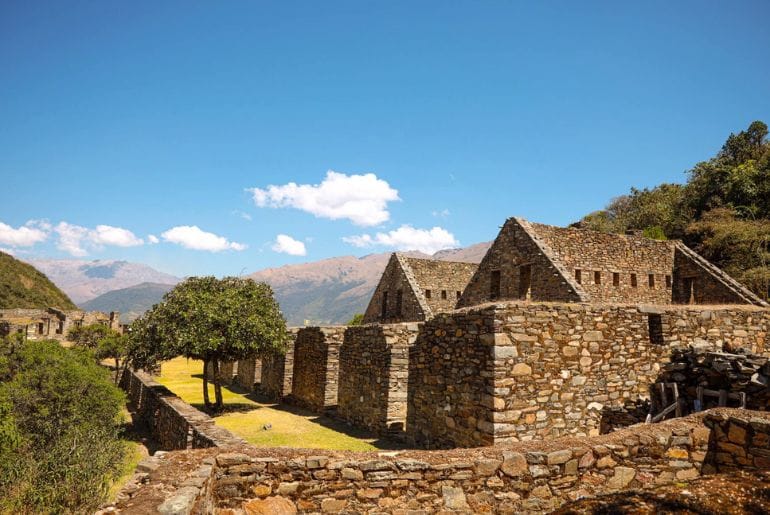
At Choquequirao, these relocated workers were likely responsible for much of the stonework, terraces, and infrastructure, blending their own architectural traditions with Inca techniques. Once their role in building the site was complete, they were probably reduced to the status of yanaconas—a semi-servile class that supported the empire through labor without enjoying the full rights of citizens.
Who Gave the Order: Tupac Yupanqui or Huayna Capac?
This labor relocation strategy raises a key historical question: Was it Tupac Yupanqui who relocated the Chachapoyas to Choquequirao, or did his successor, Huayna Capac, orchestrate this during the campaigns of the 1490s?
While definitive evidence is scarce, many scholars lean toward Huayna Capac, whose reign marked a period of aggressive expansion and consolidation of power. He is known to have waged a significant campaign in Chachapoyas territory and implemented mitma relocations to solidify imperial control and maximize the productivity of state-run agricultural estates.
The Empire’s Strategy: Control Through Labor
The use of relocated labor wasn’t just about manpower—it was a tactical maneuver. By dispersing potentially rebellious populations across the empire, the Incas weakened their ability to resist and turned them into contributors to the imperial machine.
At Choquequirao, this approach allowed the Incas to develop remote areas into ceremonial and productive centers, reinforcing their dominance over both land and people. The mitmas’ role was vital in transforming Choquequirao into the architectural and spiritual marvel we see today.
Why It Matters for Modern-Day Trekkers
For today’s adventurers, knowing who built Choquequirao adds a powerful dimension to the journey. As you traverse the challenging trails and explore the ruins, you’re walking in the footsteps of skilled workers, displaced peoples, and visionary leaders whose efforts shaped the Andes in stone and spirit.
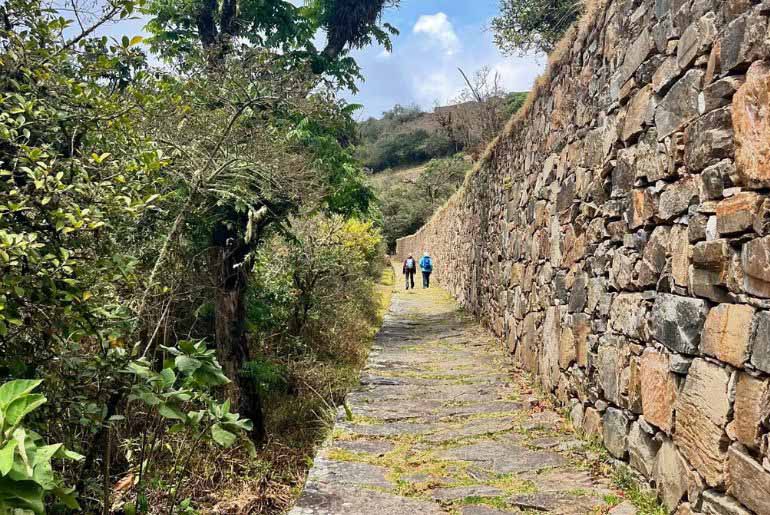
Understanding this backstory offers a richer perspective—Choquequirao isn’t just an ancient city; it’s a symbol of imperial ambition, human endurance, and cultural fusion.
Where is Choquequirao?
Choquequirao is an awe-inspiring Inca city located in southern Peru, nestled in the dramatic foothills of the snow-capped Salkantay Mountain. Situated northwest of Cusco, the site rests at a lofty 3,050 meters (10,009 feet) above sea level. Its remote location makes it a perfect destination for adventurers looking for a less-traveled path into the heart of Inca heritage.
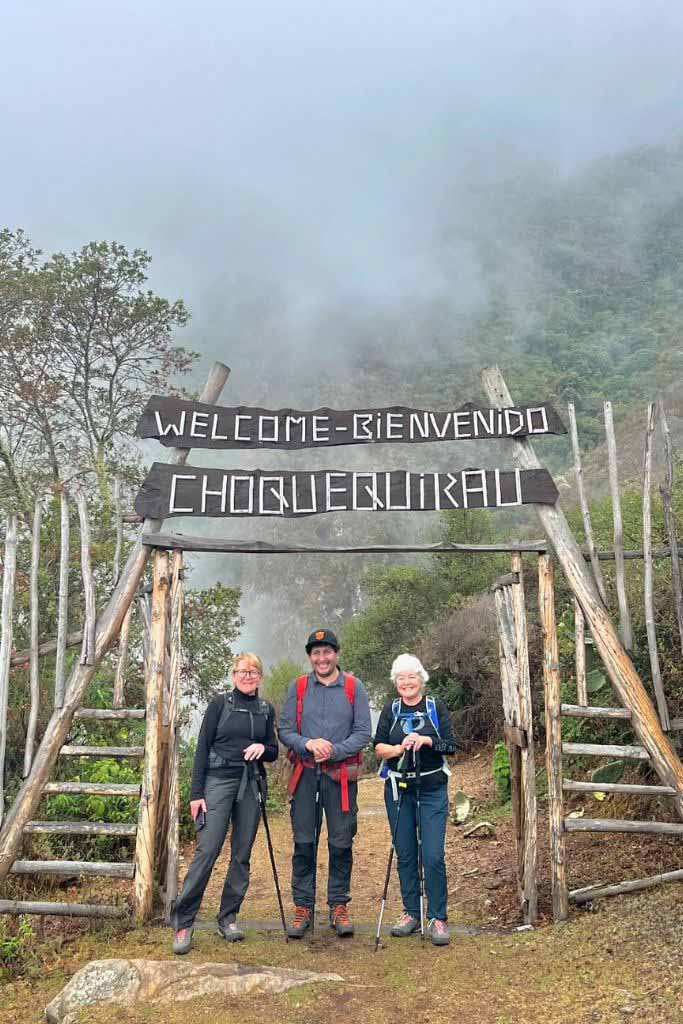
Located deep within the majestic Vilcabamba range, the ruins unfold along uneven ground, offering expansive views of the surrounding Andes. Its location is nothing short of strategic—the site lies between two major river basins:
- To the east, water flows into the Apurímac River, famous for its deep canyons and dramatic cliffs.
- Its western drainage feeds the Vilcanota-Urubamba River, further contributing to the area’s striking natural backdrop.
What Does “Choquequirao” Mean?
The name Choquequirao is rich in meaning, deeply rooted in the Quechua language and Inca culture. It combines “Choque” (gold) and “Kiraw” (cradle)—together forming the poetic and powerful phrase: “Cradle of Gold.” This name reflects both the spiritual significance and the cultural weight of the site, considered not just an architectural wonder but also a sacred place for the Inca civilization.
Hidden deep in the Andean mountains, Choquequirao is far more than a forgotten Inca city—it’s a sacred sanctuary where the Incas connected with the divine. Gold, considered the earthly reflection of the Sun God Inti, played a vital role in their spiritual and ceremonial life. For the Incas, gold wasn’t just a symbol of wealth—it embodied light, life, and the power of their most revered deity.
Detailed Itinerary for the Choquequirao Trek: A Step-by-Step Journey
The Choquequirao trek is more than just a hike—it’s a journey through ancient Inca trails, dramatic Andean landscapes, and centuries of history. Known as the sister city of Machu Picchu, Choquequirao is still off the beaten path, offering an immersive experience for those willing to take the challenge. Below is a day-by-day breakdown to help you prepare and make the most of this unforgettable adventure.
Day 1: Capulichayoc to Chikiska
- Distance: 8 km (4.9 miles)
- Hiking Time: 3–4 hours
- Altitude: From 2,850 m to 1,830 meters.
Highlights:
- Start at Capulichayoc: After a scenic drive from Cusco (approx. 4–5 hours), your trek officially begins at Capulichayoc. Here, you’ll get your first taste of the raw beauty of the Andes.
- Trail Through Rural Charm: Descend through tranquil highland villages and terraced farmlands, soaking in views of the deep Apurímac canyon.
- First Glimpses of the Wild: This section is a gentle warm-up, with opportunities to spot local wildlife and observe traditional Andean farming life.
- Overnight: Camp at Chikiska, a peaceful resting point surrounded by lush vegetation.
Day 2: Chikiska to Choquequirao
- Distance: 12 km (7.5 miles)
- Hiking Time: 8–10 hours
- Altitude: From 1,830 m to 3,150 meters.
Highlights:
- The Toughest Day: Today’s ascent is not for the faint-hearted. You’ll gain over 1,300 meters in elevation as you climb steadily toward the archaeological site.
- Cloud Forest Adventure: Hike through humid, green cloud forests, rich in biodiversity—expect sightings of hummingbirds, orchids, and if you’re lucky, the elusive spectacled bear.
- Santa Rosa Breakpoint: A key stop for rest and hydration before the final leg of the climb.
- Arrive at the Inca Gem: By late afternoon, the mystical terraces of Choquequirao come into view—your reward after a hard-fought day on the trail.
- Overnight: Camp near the ruins, with the stars and the spirits of the Andes as your ceiling.
Day 3: Exploring Choquequirao – Return to Santa Rosa
- Distance: Approx. 7 km (round trip)
- Hiking Time: 4–5 hours exploring + descent
- Altitude: 3,150 meters
Highlights:
- Guided Tour of the Ruins: Dive into the story of Choquequirao, exploring the main plaza, temples, ceremonial platforms, and the awe-inspiring lama terraces carved into the steep cliffs.
- Panoramic Andean Views: Enjoy some of the most dramatic scenery in Peru—ideal for photography and quiet reflection.
- Time to Wander: After the guided portion, you’ll have time to explore on your own and truly absorb the energy of this sacred site.
- Begin the Journey Back: In the afternoon, begin your descent and return to the Santa Rosa campsite to rest and recharge.
- Overnight: Camp at Santa Rosa.
Day 4: Return Trek – From Choquequirao to Capulichayoc
- Distance: 13 km (8 miles)
- Duration: 8–9 hours
- Altitude: From 3,150 m (Choquequirao) to 2,850 m (Capulichayoc)
Highlights:
- A Final Descent: The return begins with a descent from Choquequirao back through familiar trails. While the way down may seem easier, don’t underestimate the toll it takes on your knees—especially the steep, dusty sections.
- Panoramic Rewards: As you retrace your steps, you’ll enjoy a new perspective of the Apurímac Valley. The morning light and shifting cloud patterns offer fresh, unforgettable views.
- Back to Capulichayoc: After several hours of hiking, you’ll reach Capulichayoc, where transport will be waiting to take you back to Cusco or your next destination.
- End of the Trek: Celebrate the completion of one of the most epic treks in South America—you’ve walked where few have and stood among legends.
Fitness Requirements: Are You Ready for Choquequirao?
The Choquequirao trek is rated moderate to challenging, not because of extreme altitude, but due to its demanding ups and downs and the physical endurance required. It’s best suited for trekkers with good fitness levels and experience in multi-day hikes.
Key Fitness Considerations:
- Cardio is King: Expect long days of hiking, with up to 10 hours of physical effort. Activities like trail running, biking, or swimming will help build the stamina you need.
- Leg Power: Prepare for climbs that rise over 1,300 meters in a single day. Incorporate lunges, stair climbing, squats, and step-ups into your routine.
- Backpack Practice: You’ll be carrying your own gear (approx. 6–8 kg), so practice trekking with weight beforehand. Your spine and shoulders will thank you.
- Trekking Experience: If this is your first hike ever… maybe start smaller. If you’ve done other highland treks, you’re on the right track.
Potential Hazards on the Trail
Even seasoned hikers should come prepared. Here’s what to expect and how to handle it:
Steep, Slippery Trails
- Challenge: Both the ascent and descent involve rugged, uneven paths.
- Solution: Use trekking poles, wear high-traction boots, and pace yourself. Your knees are not indestructible—treat them with care.
Altitude Sickness
- Challenge: Although not as high as Salkantay or Ausangate, Choquequirao still hits 3,150 meters, enough to cause discomfort if you’re not acclimated.
- Solution: Spend at least 2–3 days in Cusco before your trek. Hydrate, skip alcohol, and know when to descend if symptoms kick in.
Andean Weather Mood Swings
- Challenge: Hot days, freezing nights, surprise showers—sometimes all in one afternoon.
- Solution: Dress in layers, pack a reliable rain jacket, and don’t forget gloves and a beanie for chilly evenings.
Wildlife and Insects
- Challenge: This region is home to snakes, bugs, and even the elusive Andean bear.
- Solution: Long sleeves, insect repellent, and basic awareness. Don’t stick your hand in any mysterious holes
Managing Fatigue on the Trail
Even if you’re fit, fatigue is inevitable on this trek. The secret? Smart hiking:
- Pace Yourself: You’re not racing. Use the “slow and steady” method, especially on inclines.
- Hydrate & Fuel: Drink often, and munch on nuts, dried fruit, and energy bars. It’s fuel, not just food.
- Breaks Are Strategic: Rest every 30–45 minutes to reset your muscles and breathing.
- Sleep Matters: Make the most of each campsite. Good rest equals strong legs the next morning.
- Mental Strength: Some days, your legs will say “no”—but your mind will say “we’ve come too far.” Stay focused, and the summit will follow.
Final Thoughts: Why Choquequirao Is Worth Every Step
The Choquequirao trek is not just a journey through the mountains—it’s a pilgrimage into Inca history, a challenge for body and mind, and a chance to connect with a place that still breathes with the energy of a lost empire.
It will test you. It will reward you. And long after your boots are dusty and your pack is unpacked, you’ll remember the silence of the mountains, the terraces that vanish into the clouds, and the sense of awe that only Choquequirao can offer.
Frequently Asked Questions About the Choquequirao Trek
How to Get to Choquequirao?
Before you set off, here’s a quick guide on how to get to Choquequirao:
Traveling from Cusco to Choquequirao: Whether you go independently, take a faster transport route, or opt for an organized tour, you’ll first need to get to Cachora or Capulichiyac, the starting point of your trek.
- Option: Take a bus from Cusco to Abancay, then a shared minivan to Cachora.
- Option: Use a faster route through Arcopata to Curawasi, then continue to Cachora by taxi or minivan.
- Option: Book a comfortable guided tour with an agency for a stress-free experience, including transportation, meals, and accommodation.
Is Choquequirao similar to Machu Picchu?
Both sites are impressive Incan cities, but Choquequirao is larger in area and much less visited. While Machu Picchu dazzles with its iconic views, Choquequirao offers a raw, untamed experience for true adventurers.
Do I need a permit to hike to Choquequirao?
Unlike its more famous counterpart, the Inca Trail, accessing Choquequirao doesn’t involve securing a special permit—at least for now.. However, you will need to pay an entrance fee to access the archaeological site.
How difficult is the Choquequirao trek?
This is considered a strenuous trek due to steep climbs, high altitudes, and long distances. It’s recommended for experienced hikers or those in good physical condition.
Can I visit Choquequirao without a guide?
Yes, it’s possible to trek independently, but due to the remote nature of the trail and potential risks (altitude sickness, getting lost), many opt for a guided tour for safety and convenience.
Are there mules or porters available for hire?
Yes! Local muleteers can carry your gear, making the trek more manageable. Hiring them also supports the local economy—win-win!
What’s the food situation like during the trek?
If you’re on a guided tour, meals are typically provided and surprisingly hearty. Independent hikers should plan to carry lightweight, high-calorie foods and a portable stove if they plan to cook.
Is there cell service or internet on the trail?
Nope. Consider this your digital detox. Most of the trek is off-grid, so inform loved ones beforehand and embrace the silence.
Is it safe to trek Choquequirao?
Yes, generally safe. But as with any remote trek, caution is essential. Proper gear, preparation, and a good understanding of the route are crucial.
What wildlife might I see?
Be on the lookout for condors, spectacled bears, hummingbirds, and a range of orchids. One of Choquequirao’s best-kept secrets is its rich biodiversity.
Will there be toilets or bathrooms along the way?
There are basic toilets at designated campsites, but don’t expect luxury. Don’t forget to pack your own toilet paper and hand sanitizer—essentials the trail won’t provide.
When to Trek to Choquequirao?
The best time to trek Choquequirao is during the dry season (May to September), as the trails can be quite slippery during the rainy months (October to April).
What to Pack for the Choquequirao Trek?
The Choquequirao trek is a multi-day, high-altitude adventure, so packing smart is essential for a successful trip. Here’s a checklist of what to bring:
- Backpack – A sturdy backpack with rain cover.
- Clothing -Light, breathable clothing for daytime hikes, warm layers for cold nights, and waterproof jackets.
- Footwear – Durable, comfortable hiking boots with good ankle support.
- Sleeping Bag – Warm enough for high-altitude camping.
- Water & Snacks – A refillable water bottle and high-energy snacks (e.g., trail mix, energy bars).
- Sun Protection – Sunscreen, hat, and sunglasses to protect against the sun at higher altitudes.
- Personal Essentials – Camera, toiletries, first aid kit, and headlamp.
- Insect Repellent – (Avoid Bites)
- Trekking Poles – (Support and Stability)
- Lightweight Backpack – (Comfort and Durability)
- Sturdy Hiking Boots – (Essential Footwear)
Related Posts:
The Inca Trails: Best Routes for Trekking
Machu Picchu vs Choquequirao: The Ultimate Guide for Inca Trekking Adventures
The Inca Royal Road: What You Didn’t Know About the Qhapaq Ñan
How to Prepare for High-Altitude Trekking in Peru
How To Pack For An Overnight Trekking Trip

